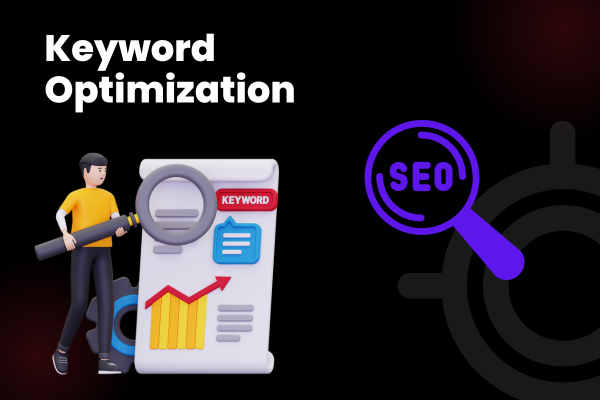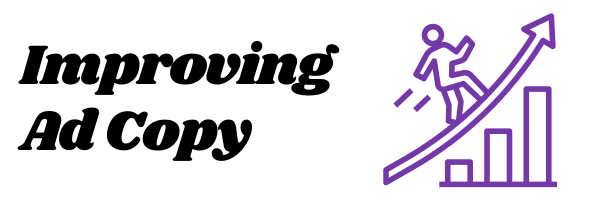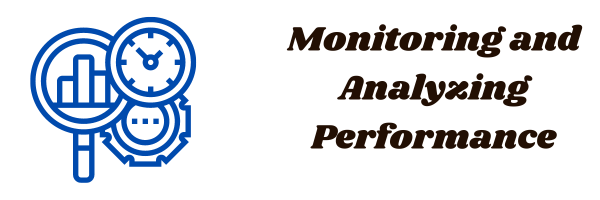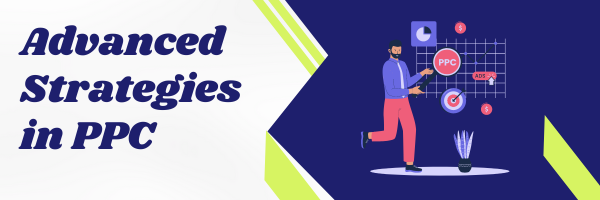How to Improve Pay-Per-Click Advertising? Pay-per-click (PPC) advertising stands as a cornerstone in the realm of digital marketing, offering a direct route to enhancing visibility and driving targeted traffic to your website. Mastering PPC campaigns isn’t just about spending money to make your ad appear; it’s about investing wisely to ensure each click contributes to your business goals.
Table of Contents
This guide will walk you through essential strategies to refine your PPC efforts, from understanding the basics to implementing advanced tactics. Whether you’re a small business owner or a seasoned marketer, improving your PPC advertising can significantly boost your return on investment (ROI), making your advertising efforts not just visible, but valuable.
Understanding PPC Campaign Fundamentals
At its core, PPC advertising is about reaching potential customers at the moment they are searching for what you offer. Here’s how you can build a solid foundation for your campaigns:

Set Clear Objectives: Define what you want to achieve with your PPC campaigns, be it increasing sales, generating leads, or boosting brand awareness. Your goals will guide all other decisions, from keyword selection to budget allocation.
Choose the Right Platforms: Not all PPC platforms are created equal. Google Ads might be the giant, but Bing Ads and social media advertising on platforms like Facebook or LinkedIn can also be valuable, depending on your target audience.
Understand Your Audience: Who are they? What are their browsing and buying behaviors? Use this information to tailor your campaigns to speak directly to their needs and desires.
Focus on Relevance: Ensure that your ads, keywords, and landing pages are tightly aligned. This coherence not only improves your Quality Score in platforms like Google Ads but also enhances user experience, leading to higher conversion rates.
By mastering these fundamentals, you’ll be able to create more targeted, effective, and efficient PPC campaigns that really speak to the needs of your potential customers.
Keyword Optimization
The right keywords are the lifeline of any successful PPC campaign. They connect your ads to the right audience. Here’s how you can optimize your keyword strategy:

Conduct Thorough Research: Use tools like Google Keyword Planner or SEMrush to find keywords that are relevant to your business and have a good balance of search volume and competition.
Use Long-Tail Keywords: These are longer, more specific phrases that tend to have lower competition and higher conversion rates. For example, instead of “shoes,” use “women’s waterproof hiking shoes.”
Include Negative Keywords: This helps you exclude unwanted traffic. For instance, if you sell new cars, adding “used” as a negative keyword ensures you don’t waste money on irrelevant clicks.
Regularly Refine Your Keywords: The search landscape is always changing. Regularly reviewing and updating your keywords can help you adapt to trends and maintain campaign effectiveness.
Effective keyword optimization ensures that your PPC ads reach the right people, increasing the chances of clicks turning into conversions.
Improving Ad Copy
Compelling ad copy is crucial for catching the eye of potential customers and convincing them to click. Here are key strategies to enhance your PPC ad copy:
Highlight Unique Selling Points (USPs): Clearly articulate what makes your product or service stand out. Is it the price, quality, or perhaps an exclusive feature? Make these benefits clear in your ad.
Use Emotional Triggers: Words that evoke emotions can significantly boost your ad’s appeal. Use power words like “transform,” “discover,” “build,” “create,” and “achieve” to grab attention and drive action.

Create a Sense of Urgency: Phrases like “limited time offer,” “sale ends soon,” or “only a few left in stock” encourage quick responses and can increase click-through rates.
Test Different Versions: A/B testing different ad copies will help you understand what resonates best with your audience. This could be varying the call-to-action (CTA), the description, or even the headline.
Crafting ad copy that connects with and motivates your audience can dramatically enhance the effectiveness of your PPC campaigns.
Optimizing Landing Pages
The effectiveness of your PPC campaign doesn’t just depend on the ad itself but also on where users land after clicking. Here’s how you can optimize your landing pages:
Ensure Relevance: Make sure the landing page directly relates to the ad. If your ad promises “30% off on Women’s Running Shoes,” the landing page should feature this offer prominently.
Streamline Design: A clean, uncluttered design keeps visitors focused on the action you want them to take. Use simple layouts, readable fonts, and clear navigation to enhance user experience.

Optimize for Conversion: Every element on the page should encourage action. This includes having a visible, compelling call-to-action (CTA) button, simplified forms, and persuasive copy that reiterates the benefits.
Fast Load Times: Speed is crucial. Ensure your landing pages load quickly on all devices to reduce bounce rates. Tools like Google‘s PageSpeed Insights can help you identify and fix speed issues.
Use A/B Testing: Experiment with different versions of your landing page to see what works best. Test different headlines, CTAs, images, and layouts to continuously improve performance.
Well-optimized landing pages can significantly increase the conversion rate of your PPC campaigns, making the most of every click.
Utilizing Ad Extensions
Ad extensions are a powerful feature that can enhance your PPC ads by providing additional information and ways for potential customers to interact with your ad. Here’s how to effectively use them:

Sitelink Extensions: These allow you to link to more than just one page on your site, like specific product categories or services. They help users find what they’re looking for on your site with just one click.
Call Extensions: Adding a phone number to your ads makes it easy for customers to call your business directly. This is especially useful for local businesses that rely on phone calls.
Location Extensions: Show your business address to attract local customers. If someone is searching for a nearby service or store, your ad will appear more relevant.
Callout Extensions: Use this to highlight specific selling points or offers, such as “free shipping,” “24/7 customer support,” or “environmentally friendly.”
Structured Snippet Extensions: These provide a way to showcase a range of products or services. For example, if you’re a retailer, you might include a snippet for “Brands: Nike, Adidas, Under Armour.”
Effectively using ad extensions not only makes your ads more attractive but also provides useful information that can drive higher click-through rates and conversions.
Managing Budgets and Bids
Effective management of your PPC budgets and bids is essential to maximize ROI and avoid overspending. Here are some strategies to optimize your budget and bidding tactics:
- Set Realistic Budgets: Determine what you’re willing to spend based on your overall marketing budget and the goals of your PPC campaign. Start small if necessary and increase your budget as you see positive results.
- Use Automated Bidding Strategies: Platforms like Google Ads offer automated bidding options that adjust your bids in real-time based on the likelihood of a sale or a lead. This can help maximize your results without constant manual adjustments.

- Monitor Performance Regularly: Keep an eye on how your ads are performing. If a particular campaign is draining your budget without delivering results, it’s time to reevaluate your approach.
- Adjust Bids According to Performance: Increase bids on keywords that are performing well to capitalize on their success. Conversely, lower bids or pause keywords that are not delivering the expected results.
- Seasonal Adjustments: Be aware of seasonal trends in your industry. You might need to increase your budget during high-demand periods and decrease it when demand wanes.
By carefully managing your budgets and bids, you can ensure that your PPC campaigns remain cost-effective while driving the desired outcomes.
Leveraging Audience Targeting
Targeting the right audience is pivotal in maximizing the impact of your PPC campaigns. Here’s how you can fine-tune your audience targeting strategies:
- Demographic Targeting: Use demographic information like age, gender, income, and education to tailor your ads to the group most likely to be interested in your offerings.
- Geographic Targeting: Tailor your ads based on location. This can range from broad targeting like countries or cities to more granular targeting such as zip codes or even radius targeting around a specific point.

- Interest and Behavior Targeting: Platforms like Google Ads and Facebook allow you to target users based on their interests, behaviors, and even their previous interactions with your website (remarketing).
- Device Targeting: Adjust your bids for different devices. You might want to bid more for users on mobile devices if your website is mobile-optimized and you recognize that a significant portion of your traffic comes from mobile.
- Time of Day/Day of Week Targeting: Optimize your bids based on the time of day or day of the week to capture your audience when they are most likely to convert.
By leveraging precise audience targeting, you can ensure that your ads are seen by the people most likely to be interested in what you offer, thus improving the efficiency and effectiveness of your campaigns.
Monitoring and Analyzing Performance
To continuously improve your PPC campaigns, it’s crucial to monitor and analyze their performance regularly. Here’s how you can effectively track and optimize your PPC efforts:
Use Analytics Tools: Tools like Google Analytics provide detailed insights into how users interact with your ads and your website. Set up conversion tracking to see what happens after a user clicks on your ads—whether they make a purchase, sign up for a newsletter, or fill out a contact form.
Review Key Performance Indicators (KPIs): Focus on metrics such as click-through rate (CTR), cost per click (CPC), conversion rate, and cost per acquisition (CPA). These indicators will help you gauge the effectiveness of your campaigns and identify areas for improvement.

Conduct A/B Testing: Regularly test different elements of your PPC campaigns, such as ad copy, landing pages, and calls to action. This will help you understand what works best with your target audience and refine your strategy accordingly.
Adjust Strategies Based on Data: Use the data you gather to make informed decisions about your PPC strategies. For example, if you notice higher engagement rates during specific hours, you might increase your bid adjustments during those times.
Regular Reporting: Create regular reports to keep track of your progress and share insights with your team or clients. This helps keep everyone informed and ensures strategic adjustments are data-driven.
By actively monitoring and analyzing your PPC campaigns, you can make data-informed decisions that drive better results and higher returns on your advertising investment.
Advanced Strategies in PPC
To stay ahead in the competitive landscape of PPC advertising, employing advanced strategies can give you an edge. Here are some sophisticated tactics to consider:
- Use of Machine Learning: Advanced PPC platforms utilize machine learning algorithms to optimize bids and ads based on conversion probability. Leveraging these capabilities can significantly enhance campaign performance.
- Cross-Channel Marketing: Integrate your PPC strategy with other digital marketing channels like SEO, social media, and email marketing for a cohesive marketing approach that reinforces your message across multiple touchpoints.

- Remarketing and Retargeting: These strategies involve showing ads to users who have previously visited your website but did not convert. Remarketing can effectively draw these potential customers back to your site, increasing the chances of conversion.
- Use of Video Ads: Incorporating video content in your PPC campaigns can capture attention more effectively than text alone. Platforms like YouTube provide extensive options for video advertising.
- Smart Bidding for Audience Segments: Adjust your bidding strategies for different audience segments based on their performance. This involves increasing bids for high-performing segments and decreasing for lower-performing ones.
By adopting these advanced PPC strategies, you can enhance your campaigns’ complexity and efficiency, leading to better targeting, higher engagement, and increased conversions.
How to Improve Pay-Per-Click Advertising | Personal experience
The question is how to improve pay-per-click advertising? and it resonated with me because I’ve been down that road. It’s a journey, right? Let me share a bit of my story which might give you some insights.
A few years ago, I was managing PPC for a small startup selling eco-friendly office supplies. Budgets were tight, and every penny had to scream for attention! The breakthrough came when we started really diving deep into keyword research. I mean not just skimming through the popular keywords but finding those niche terms that our competitors were overlooking.
We used tools like SEMrush and Google Keyword Planner to identify less competitive keywords that were more affordable but still highly relevant. This strategic shift not only reduced our costs but significantly increased our conversion rates because we were reaching the right audience, not just the largest one.
On top of that, we began experimenting with our ad copy and landing pages. It was like A/B testing on steroids! We tweaked every headline, every call-to-action, and even the color of our buttons. I remember one particular test where changing the call-to-action from “Buy Now” to “Discover Our Eco Range” increased click-through rates by over 20%.
It was a clear reminder that sometimes, the way you phrase your message can resonate differently with your audience. This hands-on, detail-oriented approach turned our PPC campaigns from a money sink into a major profit generator. Just goes to show, sometimes you’ve gotta dig into the details and get creative with your strategies. Hope this helps, and good luck with your campaigns!
Conclusion
Improving your pay-per-click advertising efforts requires a blend of fundamental strategies and advanced techniques. By understanding the basics, optimizing your keywords, refining ad copy, and enhancing landing pages, you lay a strong foundation. Leveraging ad extensions, managing budgets wisely, and targeting the right audiences further streamline your campaigns.
Continuously monitoring and analyzing performance ensures that you are always ahead of the curve, adapting to changes and optimizing for the best results. Lastly, embracing advanced strategies like machine learning and cross-channel marketing can propel your PPC campaigns to new heights. Remember, the key to successful PPC advertising lies in persistent testing, learning, and adapting.






